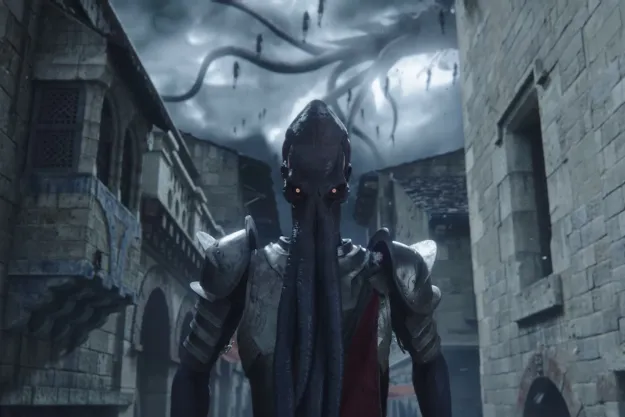You can call it a clone if you want, but MultiVersus has done enough to innovate on the Smash Bros. formula to make it a completely unique feeling fighter. The core concept is the same: You pick from a roster of characters from different franchises to fight it out on a 2D stage by landing different attacks and moves until you or your opponent are knocked off the stage a set number of times. While the appeal of seeing these characters face off that would never otherwise interact, such as Arya Stark and Shaggy, is enough to draw in most players and have a good time, there is a lot more depth than meets the eye.
Unlike any of the Smash titles, MultiVersus is willing to cater a bit more to the hardcore audience in addition to more casual players. The game’s controls are simple enough, and just playing the game looks and feels fun, but there are plenty of deeper systems at play waiting for anyone who wants to find them. Fighting game meta can change all the time as balance patches and new characters come out, but for anyone just picking up this free platform fighter, these are solid beginner tips and tricks that will help you get a leg up on the competition in MultiVersus.
Further reading
- LeBron, Rick and Morty are coming to MultiVersus
- It’s time for a Marvel-style video game crossover universe
- Is free-to-play the future of fighting games?
Learn your core moveset
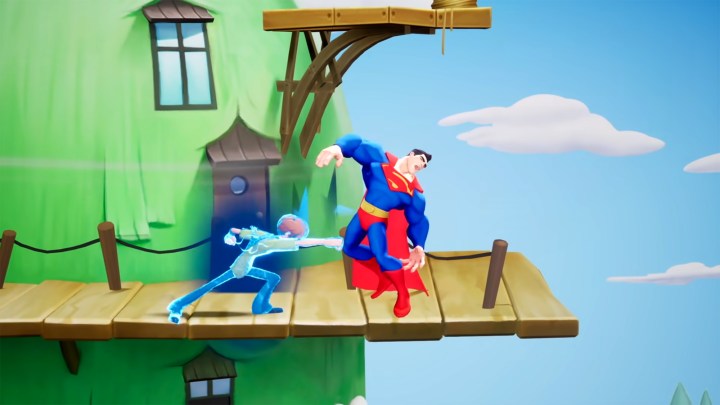
The first step to mastering any fighting game, platform fighter or not, is understanding what your character can do. In MultiVersus, all characters have the same basic moveset that applies to every character. You have your basic attack, special, dodge, and jump. However, each attack, both regular and special, can be modified depending on which direction you are holding when you hit the button or if you just hit it while neutral. Sometimes this will result in not attacking at all, but applying a buff or creating a projectile. Run through each move before going into a match so you know what your character is going to do for each combination of direction and attack.
Some attacks, usually specials, may also be charge attacks. You’ll know this if, when you hit the button, a little circle appears by your character. If this happens, you can hold that attack to charge it up to make it stronger, but it will of course leave you open, so time it carefully.
Every character can jump and dodge, but with their own differences in height and recovery. You can jump twice before needing to land, as well as do two air dodges. Jumping will help you recover from getting hit off stages, plus position you around the stage. Dodging, whether on the ground or in the air, temporarily makes you invulnerable to attack, but for a very short window that leaves you open at the end. Also, dodging too often depletes a blue meter below your character and make it worse, so don’t spam it.
Don’t spam

Your basic attack will automatically go into a combo, which you can easily fall into relying on as your main attack. This is okay for a short time, but MultiVersus uses an attack decay system that will eventually make your attacks do less damage if you use them over and over. When you use a move too much, the words “attack decay” will appear by your character. At this point, you will want to start using different moves to reset the decay so you can fight at full power.
Understand character classes
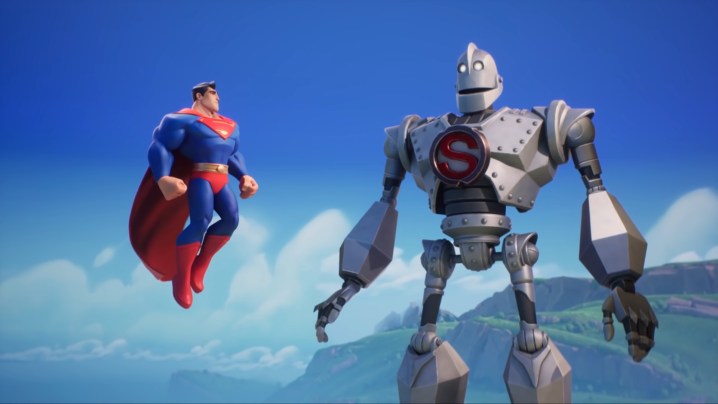
Characters in MultiVersus each have different roles that give you a general idea of how they play and what role they serve in a fight. These classes are: tank, support, bruisers, and assassins.
Tanks are the toughest to knock out and are made for getting in close to attack.
Support characters play a mix of attack and support for your teammate. How they help their teammate will vary from character to character, so learn exactly what your support does to know what moves to do and when to give the best backup.
Bruisers are stronger versions of tanks, but also easier to knock out. These are kind of your Mario characters in MultiVersus, in that they’re good all around, but not excellent at one thing.
Assassins are high-damage, low-health strikers. You will want to have great control and understanding of your character’s moves to get quick hits and kills in but also be able to get out of danger.
Pick a main and level up

Unlike a Smash Bros. title, MultiVersus has a progression system for each character. You will start with them all at level 1, naturally, and slowly level them up as you play more matches and earn XP. The starting roster is quite big, plus more characters will be coming, so you will want to find one you want to stick with early on and level up as soon as you can. As you level up, that character will start to earn perks that improve them in different ways unique to them. They all fall in either the offense, defense, or utility categories.
Not only does unlocking all your character’s perk make them better, but will also help you in the long run. Once a character reaches level nine, you unlock the option to train perks. What this does is allow you, for the cost of gold, to teach a character to use a perk that a different character learns. But, if you’ve unlocked the perk on one character you want to train on a different character already, you will get a discount on how much gold it costs.
Partner up and stack perks
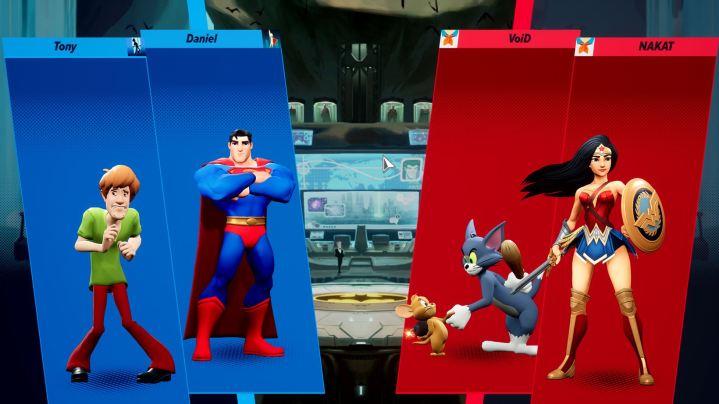
One of the other main ways MultiVersus differentiates itself from any other Smash clone is the fact that it was designed for 2-on-2 battles first. Sure, you can play 1-v-1 but the primary mode, as it were, is in team play. Going back to the character classes, you will want to diversify which two roles you and your partner play to compliment each other. Supports are great with every other class, but you really want to avoid being two of the same class.
Stacking perks is also a unique feature to 2-v-2 games. Perk stacking is giving both you and your partner a buff to any shared perk you both have equipped. So, whenever possible, match up your perks to get an even greater advantage over your opponents.
Don’t be afraid to leave the stage
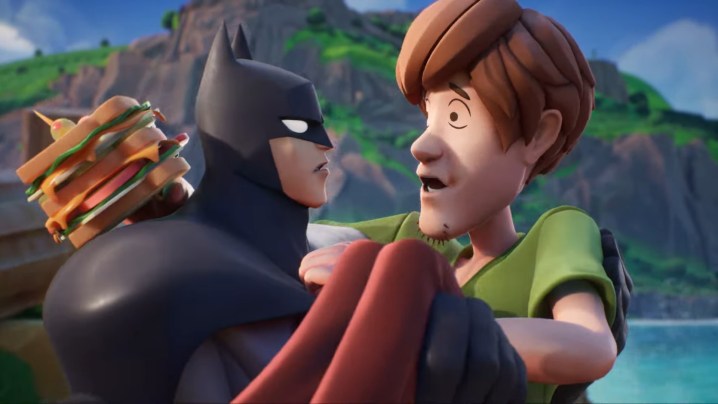
This is a high level mechanic in Smash, but jumping off the stage to chase an opponent and spike them for an easier K.O in MultiVersus, while still risky, shouldn’t be feared. We already mentioned that you have two jumps and two dodges in the air, but you also have two up specials that give you height, too. That alone gives every character a ton of air movement options that let you stay off the ground for quite a while. If that wasn’t enough, though, you can also do wall jumps to reset your movement, and wall jumps have no limit. It’s still a risk-vs-reward move, especially if you whiff a downward strike that sends your character to the edge, but you have plenty of recovery options to experiment with playing this way.
Read the glossary
Finally, it may seem boring, but there are a ton of mechanics in MultiVersus. So many that, not only would it be too much for the game to teach you every single one, but even in a guide like this. That’s where the glossary on the main menu comes in handy. This will give you quick explanations of deeper systems like armor, charmed, disorient, cooked, and more. You’ll eventually internalize these, but having this tool will let you reference exactly what does what when you encounter something new in a match or how to best use a character that can use some of these modifiers.
Editors' Recommendations
- How MultiVersus worked Jason Voorhees into a kid-friendly fighting game
- V Rising beginner’s guide: 5 tips and tricks to get started
- The best Wordle starting words, tips, and tricks for beginners
- Modern Warfare 3 Zombies: tips and tricks for MWZ
- Cities: Skylines II beginner’s guide: tips and tricks to get started

